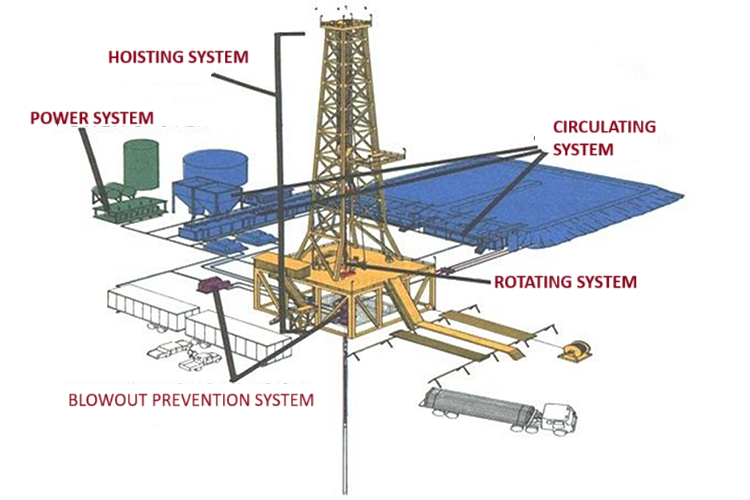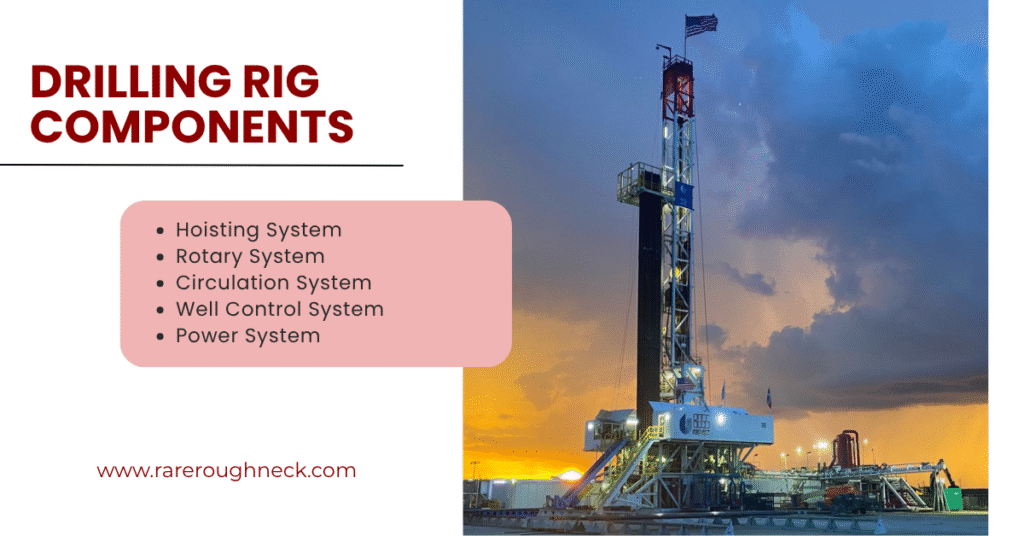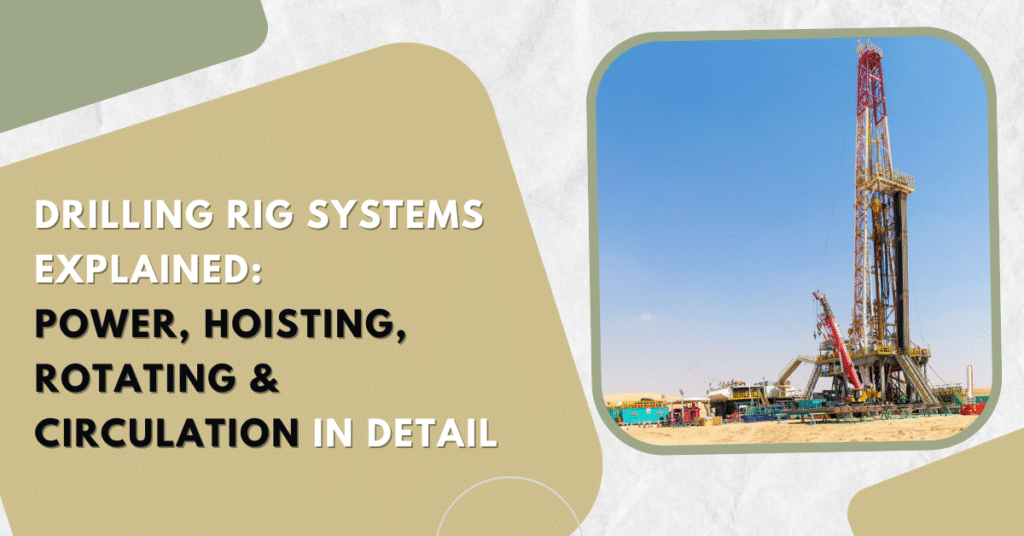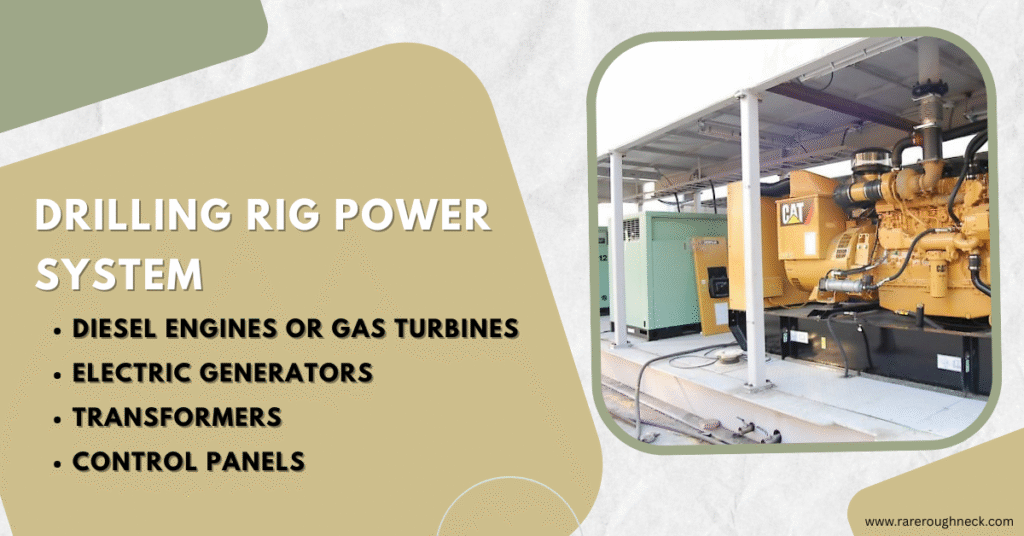When someone mentions “oil drilling,” most people imagine a tall steel tower and mud flying around. But few realize how complex the drilling rig components are that power this process.
In this guide, we break down the five essential systems and parts that make a drilling rig work — from the towering derrick to the life-saving blowout preventer (BOP). Whether you’re new to the oilfield or want to refresh your knowledge, this guide is for you.
Table of Contents
Major Drilling Rig Components by System
Here’s a breakdown of the core drilling rig components, grouped into their primary systems.

A. Hoisting System – The Lifting Backbone
The hoisting system lifts and lowers heavy drilling equipment.
Key Components:
- Mast/Derrick: The tall structure that supports all lifting.
- Crown Block & Traveling Block: Work like a pulley system to carry massive loads.
- Drawworks: The winch that powers lifting operations.
- Hook & Swivel: Connects drill string and allows it to rotate and receive mud flow.
B. Rotary System – Turning the Drill Bit
Responsible for rotating the drill bit to penetrate the Earth’s surface.
Key Components:
- Rotary Table / Top Drive: Rotates the drill string. (Top drive is the modern method.)
- Kelly / Drive Shaft: Transfers rotation from the rig to the drill string.
- Drill String: Connected pipes that rotate and go deep underground.
- Drill Bit: The cutting edge — can be PDC or roller cone types.
C. Circulation System – Managing Drilling Mud
This system circulates drilling fluid (mud) to cool the bit, remove cuttings, and control pressure.
Key Components:
- Mud Pumps: Force mud down the drill string.
- Mud Tanks: Store and separate used and clean mud.
- Shale Shakers & Desanders: Remove solids from the returning mud.
- Desilters: Clean out very fine rock particles.
D. Well Control System – Preventing Disasters
This system ensures well safety by controlling formation pressure.
Key Components:
- Blowout Preventer (BOP): Closes the well in emergency conditions. (Types: Ram & Annular BOP)
- Choke Manifold: Controls the flow and pressure coming from the well.
- Mud Logging Unit: Monitors for gas kicks or formation changes.
E. Power System – Fueling the Operation
Everything on a rig runs on power — mainly from diesel engines and electric generators.
Key Components:
- Diesel Engines: Primary power source.
- Generators: Convert mechanical to electrical power.
- Control Consoles: Operators monitor and control all rig activities here.




Pingback: Drilling Rig Systems Explained: Power, Hoisting, Rotating & Circulation in Detail - rareroughneck.com
Pingback: Drilling Rig Power System – The Energy Core of Oilfield Operations - rareroughneck.com